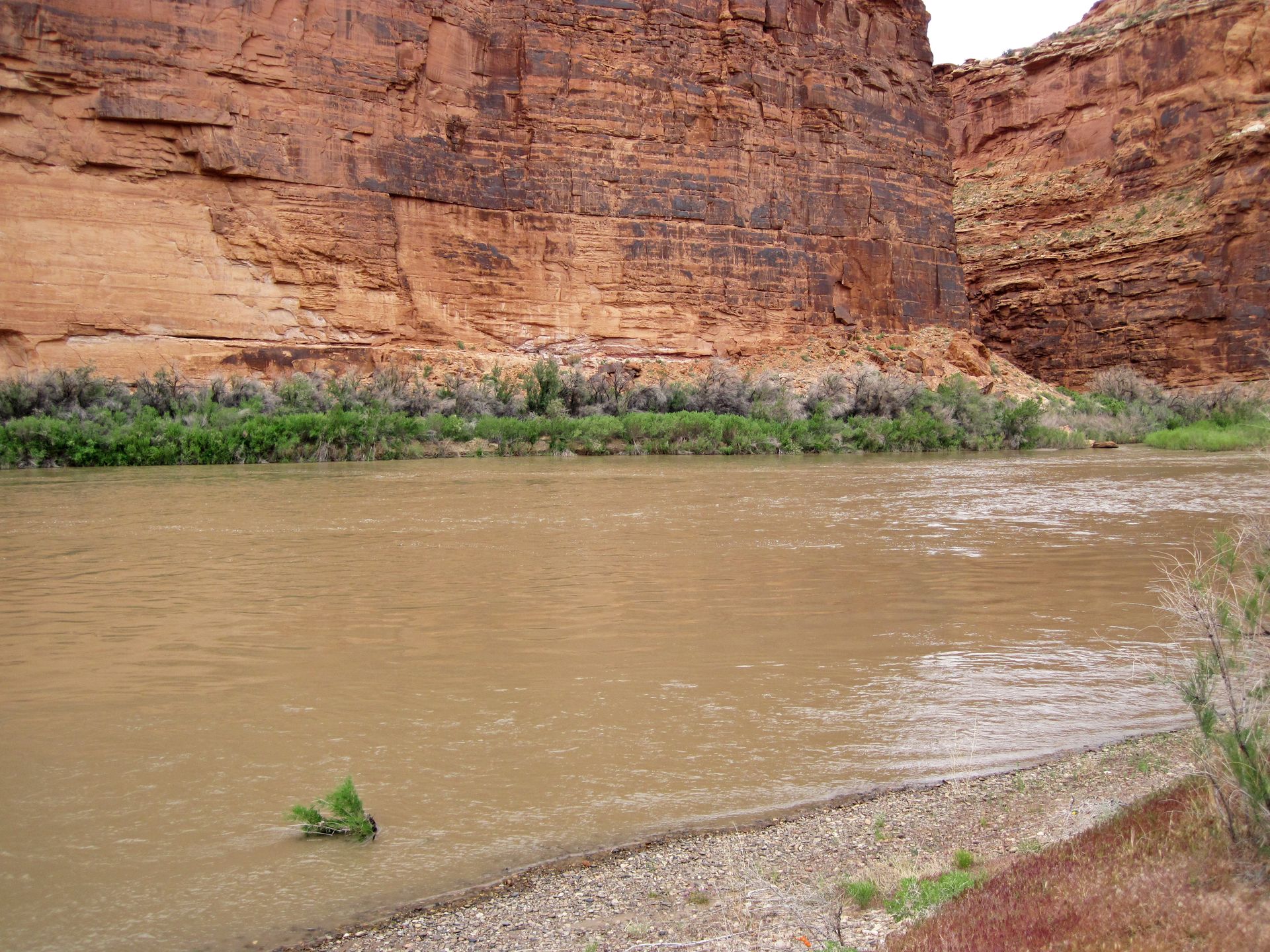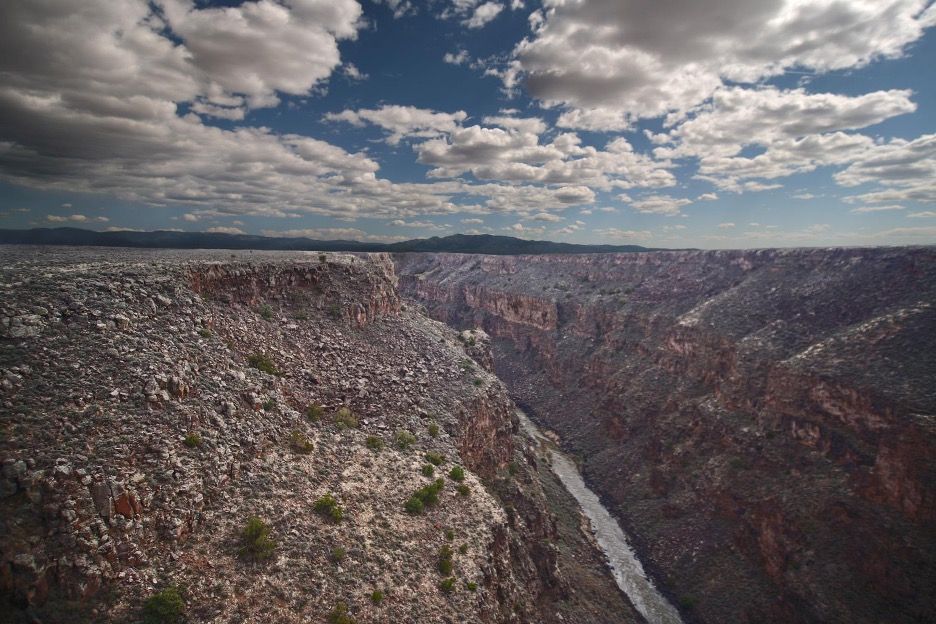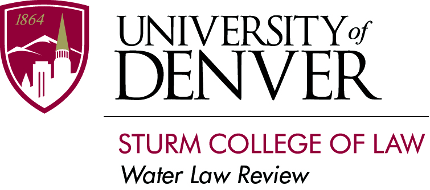“Removing lead at its source by removing lead service lines may be the heart of the program, but communication, outreach and education is the foundation on which it is all built[.]”
– Meg Trubee, Communications, Outreach, and Education Manager for Denver Water's LRPP.
Colorado is known for its clear blue mountain lakes, as popularized by the late John Denver in his song “Rocky Mountain High.” People come to Colorado every year to hike up to Bear Lake and see the towering snow caps slowly trickle down into the perfect blue lake, or to drink from one of the many small high-elevation seasonal lakes that are as clear as glass and seemingly more of a mirror than a body of water. Yet, on their journey to the pristine Rocky Mountain National Park, tourists first fly into Denver International Airport and drive down I-70 through Denver and South Adams County. There, our tourists pass hundreds of thousands of homes with municipal infrastructure delivering that same pure Colorado mountain water, only by now, it is potentially contaminated by a widely known poison – lead.
Denver Water’s Lead and Copper Rule Variance
Denver Water–the municipal water provider for the greater Denver Metropolitan Area–applied for a variance from the Environmental Protection Agency's (EPA) Lead and Copper Rule (LCR). The variance received approval on December 16, 2019. As a result, rather than engaging in Optimal Corrosion Control Treatment (OCCT) by treating water with orthophosphates (which reduces the likelihood of lead contamination by 90%), Denver Water is conducting lead service line replacements. This means replacing any lead pipes, or pipes made of copper and lead solder, with safer materials such as steel for water delivery. This project has been in progress for three years, and with more than 4,600 pipes already replaced and another decade left in the program, Denver Water’s progress has been remarkable.
As a part of the variance, Denver Water launched an initiative to focus on historically underserved neighborhoods, usually communities of color. It should be noted that Denver, along with a majority of the U.S., has a long history of environmental racism. The city has a strong history of redlining neighborhoods of color. Redlining is a practice in which loans were systematically denied to residents of ‘redlined’ neighborhoods on the basis of perceived risk. The Homeowner’s Loan Corporation (HOLC), established by the federal government in 1933, created the redlining system. It advised which neighborhoods lenders should invest money into through loans for homebuyers or owners. The HOLC designated neighborhoods by risk level, a coded way of evaluating neighborhoods by racial and ethnic make-up. The absence of community investment accompanied practices denying residents of those neighborhoods access to other neighborhoods considered ‘safer’ for investment, otherwise known as ‘greenlined’ spaces. Redlining is well known as a federal system of segregation, which many U.S. cities still experience the ramifications of to this day.
Addressing Injustice Through Water Infrastructure
Groundwork U.S.A. is an organization committed to education and action around environmental justice by better preparing communities to weather the impacts of climate change. Denver is one of the cities with which the organization works, and in doing so, Groundwork Denver created a detailed redlining map of the city. Denver’s history of redlining translates to low-income communities and communities of color living in neighborhoods with disproportionate environmental dangers. These dangers range from living closest to polluting factories, living on land contaminated with chemicals from mustard gas manufacturing, and living in built environments not equipped with infrastructure to handle the effects of climate change.
Denver Water’s variance sets out in part to address the disproportionate impacts these communities face. Though Denver Water must replace all lead service lines in their entire area of service, they are prioritizing construction in historically underserved neighborhoods first. For instance, parts of Baker, Barnum, City Park, Whittier, Cole, and Clayton have all been partially, if not fully, completed. The neighborhoods of Elyria Swansea and Globeville are undergoing (or will soon undergo) Lead Service Line Replacements (LSLR) as well. Together, these are all neighborhoods that Groundwork Denver has identified as historically redlined and at risk for compounding health issues due to the mixture of climate change and environmental racism. Though those neighborhoods are still experiencing other forms of environmental racism such as hostile built environments, Denver Water is doing what is within its power to reduce and remove lead risk to those neighborhoods. This is a first step in the right direction towards addressing such environmental injustice.
Another important way that Denver Water is leading the Environmental Justice front is by engaging in ‘Full LSLR.’ This makes Denver one of only a few cities in the country to undergo this process. Water service lines are made up of two parts. The first is the public service line that runs under the street and is maintained by the utility. The second part is the privately owned portion of the line which connects an individual house to the public service line.
Traditionally, cities or utilities that set out to conduct lead service line replacements would engage in ‘Partial LSLR.’ Though they would replace the public portion of the water service line, it would be up to the individual owner of a property to replace the private portion. These are far more common because the Federal Lead and Copper Rule–the governing legislation regarding lead pipes first promulgated in 1991–only requires partial LSLR. Though this may seem like progress, even if it is not ideal, the reality is that partial LSLRs are often more dangerous than leaving both portions of the line alone. Lead service line replacement construction often disturbs the private portion of the line, and such agitation significantly increases the risk of the pipes shedding lead into water. Had the construction never taken place, the pipe would not have been agitated.
Partial LSLR frequently negatively impacts communities of color and low-income communities the most. This process can be quite expensive, putting a larger burden on these communities. Furthermore, communities of color and low-income communities are far more likely to be renters. This means that they do not have the ability to hire a private contractor if their landlord refuses to pay for the private replacement, let alone be able to pay for it themselves. If an individual is a homeowner, those in underserved communities are still far less likely to have the resources to pay a private contractor. In total, partial LSLRs impact underserved communities far more disproportionately than their more affluent neighbors and are simply an inequitable solution.
Full LSLR programs abate these issues. As opposed to ‘Partial LSLR’, ‘Full LSLR’ involves a utility company replacing both the private and public portions of the utility line. When a utility company such as Denver Water sets out to replace all lead service lines in their service area–including the private portions of the line–the utility circumvents inequitable distribution of line replacements. It ensures that no matter socio-economic status, all customers of the utility company will have access to clean water after the replacement. Denver Water’s variance, granting a fifteen year period to replace 64,000–84,000 lead service lines in its service area, is the second biggest full LSLR to date. Detroit, Michigan is the only service area with a larger LSLR goal, with a plan currently in development for 125,000 lines replaced. The implications of Denver Water’s variance are significant and should set an example for cities around the country.
The Pitcher-Filter Program
In the meantime, for those households who have lead service lines and must wait longer to have their service lines replaced, the city is providing pitcher filters with six-month replacement filters. The filters are of a quality high enough to filter out lead and are meant to mitigate any potential lead-poisoning as the fifteen-year LSLR is implemented.
Through four quarterly reports published in 2020, Denver Water addressed the effectiveness of the filter program along with issues associated with distribution. The Lead Reduction Program (LRP) Quarterly Report for Q1 2020 only polled 3,635 households. However, polling ramped up dramatically in the second quarter, with 88,064 households polled. This quarter represents the significant majority of households, with numbers falling in Q3 and Q4. Consistently through each quarter, Denver Water found that around 1% of filters distributed to households were returned. Though there are a variety of explanations for such returns (such as empty units or incorrect addresses), any return whatsoever still presents a significant problem for Denver Water. What this means is that households who are at risk of lead poisoning are not getting the protection they need. On the whole, however, the distribution program has been a success. In the second quarter, there were 1,689 filters returned to Denver Water. Out of the 88,064 filters distributed, this is something that Denver Water should be proud of.
Major pillars of environmental justice are the values of community input, outreach, and education. As a part of the variance, Denver Water is conducting outreach plans to accompany the distribution of filters. Informational booklets were distributed to every house that received a filter or has been identified as a lead risk. Two public comment periods opened Denver Water up to feedback and criticism of the plan. Notably, Denver Water also engaged in grassroots outreach. According to the Q1 2020 report, Denver Water “[u]tilized the LRP prioritization model to identify tiered priorities for neighborhood, community, and business outreach, which includes a visual presentation to provide an overview of the program with neighborhood specific information….” Globeville, for example, was identified as the first target of grassroots community outreach.
The COVID-19 pandemic has made grassroots community outreach difficult. Presentations were cancelled due to quarantine requirements, and grassroots efforts (originally planned for in-person) were cut short or never implemented. The pandemic has also made data-collection difficult. The Q1 2020 report set out to collect data on the efficacy of the filter program. Samples had to be collected by going in-person to residences. From the beginning of these studies, Denver Water found that nine of twenty-six polled households had not opened or assembled their filter kits. Two distributed filters resulted in positive lead tests. Despite the urgency, the study closed before completion due to the impossibility of in-house visits during the height of the pandemic.
As restrictions begin to lift, we will likely see more data come out about the effectiveness of the filter program. As Denver Water more accurately identifies the strengths and weaknesses of the program, there may be renewed efforts towards filter education and outreach. To do so, Denver Water could consider additional filtering while LSLR is ongoing, as well as other solutions that have not yet been brought to the table. It is encouraging that over the next twelve or so years, Denver Water will continue to conduct full LSLR in households throughout its entire service area. The variance only mandated quarterly reports through 2020, which has led to Denver Water releasing reports on a semi-annual basis thereafter. Nonetheless, the success of the LRP could mean an increase in consumer protection from lead around the country. All eyes will be on Denver Water and its focus on environmental justice as a driving force of the program, setting a positive precedent for other municipalities to follow.
SOURCES
Community and Utility Efforts to Replace Lead Service Lines, Envtl. Def. Fund Health, (Nov. 20, 2020), https://www.edf.org/health/recognizing-community-efforts-replace-lsl.
Denver Water, Denver Water Lead Reduction Program Quarterly Report – Q1 2020, (Apr. 10, 2020), https://www.denverwater.org/sites/default/files/lead-reduction-program-quarterly-report-q1-2020.pdf.
Denver Water, Executive Summary of the Lead Reduction Program Plan, (Sept. 2019), https://www.epa.gov/dwreginfo/optimal-corrosion-control-treatment-evaluation-technical-recommendations.
EPA Office of Water, Drinking Water Requirements for States and Public Water Systems: Lead and Copper Rule, Drinking Water Rules (Mar. 31, 2021), https://www.epa.gov/dwreginfo/lead-and-copper-rule#rule-summary.
EPA Office of Water, Optimal Corrosion Control Treatment Evaluation Technical Recommendations, Drinking Water Rules (Mar. 31, 2021), https://www.epa.gov/dwreginfo/optimal-corrosion-control-treatment-evaluation-technical-recommendations.
Groundwork Denver, Climate Safe Neighborhoods, https://gwmke.maps.arcgis.com/apps/Cascade/index.html?appid=3661f4dbe77e45c9951b4879c7401986 (last visited Nov. 20, 2021).
Joe Salas, Removing barriers to talking about the Lead Reduction Program, Denver Water: TAP Home (Sept. 10, 2020), https://www.denverwater.org/tap/removing-barriers-to-talking-about-the-lead-reduction-program (quoting Meg Trubee, communications, outreach, and education manager for Denver Water’s LRPP).
Pandit, Tilak, Old, toxic, rusty, lead pipes on construction site, Dreamstime, https://www.dreamstime.com/old-toxic-rusty-lead-pipes-construction-site-image233903159 (last visited Mar. 1, 2022).
Tom Neltner, A closer look at the environmental justice implications of EPA’s proposed lead in water rule, Envtl. Def. Fund Health, (Feb. 4, 2020), http://blogs.edf.org/health/2020/02/04/a-closer-look-environmental-justice-implications-of-epas-proposed-lcr/#_ftn4.



